 |
 |
Observing Programs at RLO
(Occultations) As it moves in its orbit about the Earth, the Moon comes between observers on the Earth and the stars in it's apparent path. Properly located observers can see the Moon eclipse, or occult, these stars. The table shows stars that will be occulted by the moon for Bonner Springs Kansas. A modest 60mm refractor will show these eclipsed stars to 6th-7th magnitude. A good 6" reflector will reach 8th-9th magnitude stars if the optics are clean, and the optics are of good quality. More information concerning occultations, can be found at the I.O.T.A.web site. For the table a simple explanation of how to read the predictions can be found here, and A simple explanation of how to make an observation can be found here. Scientists use the observations made to better define the limb of the moon, which in turn is used by solar scientists during solar eclipses to better determine the size of the sun; to study the motion of the moon; and to determine feature heights more accurately than was gathered by the Clementine Lunar Spacecraft.
Occulted by the Moon (pdf format)
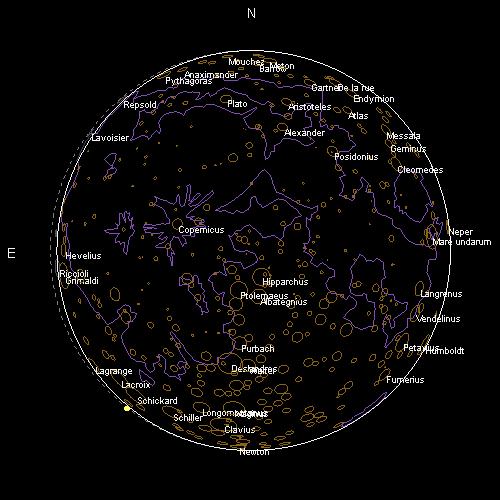 |
The first thing that comes to mind when someone says "lunar rays", are the beautiful ray systems that are best seen during full moon. The ray systems are fascinating to study, and at the present time, the Association of Lunar and Planetary Observers is beginning a new joint project to catalog, map and study the bright lunar ray systems. This article though, is not about the lunar ray systems, but rather "lunar light rays". A lunar light ray, is that phenomena which occurs when the sun is at a low altitude angle in relation to a lunar feature (typically a crater), and the sunlight shines through a cleft in a crater wall, thus exhibiting a spike of light across the dark crater floor. Jeff Medkeff further defines the "true" light ray as one which crosses 3 degrees of longitude while being less, on average, than 1/4 degree in latitude width. These can occur at either sunrise or sunset. Because of the geometry of the event, they are usually short-lived and most occur within only a 2-3 hour "window of opportunity". Because of the criteria for low sun angle on a feature, I used a program called "Lunar Toolkit" which is written and distributed by Harry Jamieson, to predict future events. Harry is a member of A.L.P.O. and designed the program primarily for observing and cataloging lunar domes. Since the software offered a module to predict future events by sun angle (also used in computing predictions for dome studies), it was easy to compute the next dates for similar sun angle over a lunar crater. Predictions were generated for four standard stations across the United States so those observers could be alerted the next time a light ray would be visible. The predictions have proven accurate within a half-hour of the event. Although this is not an official observing program for any one organization, anyone can "discover" or observe a lunar light ray with a telescope. They are best detected by scanning the lunar terminator, and if you are lucky, you just might spot one. If you suspect you have seen a lunar light ray, or submitting an observation on a previously seen ray, you need to send me a report so that predictions can be generated for follow-up. The report needs to have date and time of observation; your location; type of telescope; crater name; and description of what you saw. I look forward to hearing from anyone that is interested in observing these elusive lunar events. One can easily see numerous geological features on the moon. One can easily observe occultations and grazes. But it takes a really dedicated lunar observer to catch a lunar light ray!
|
Done at the RLO
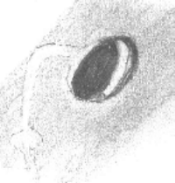 Crater LeVerrier 10/20/90 30" f4.5 @ 214x |
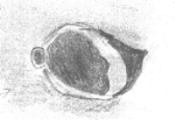 Crater Birt 11/26/90 30" f4.5 @ 264x |
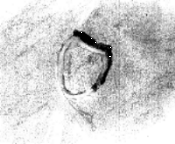 Crater Wallace 11/26/90 30" f4.5 @ 264x |
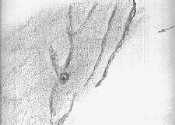 Rille in Sinus Iridium 30" f4.5 @ 171x |
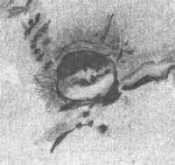 Crater Eratosthenes 06/25/96 10" f6.3 @ 92x |
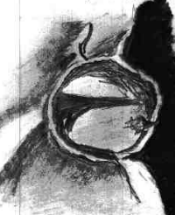 Crater Kies 07/07/95 2:15UT 8" f7 @ 89x/119x |
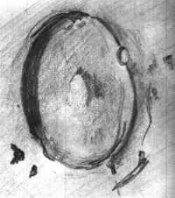 Crater Macrobius 06/21/96 0:57UT 10" f6.3 @ 92x/128x |
last updated 15 Dec 2018